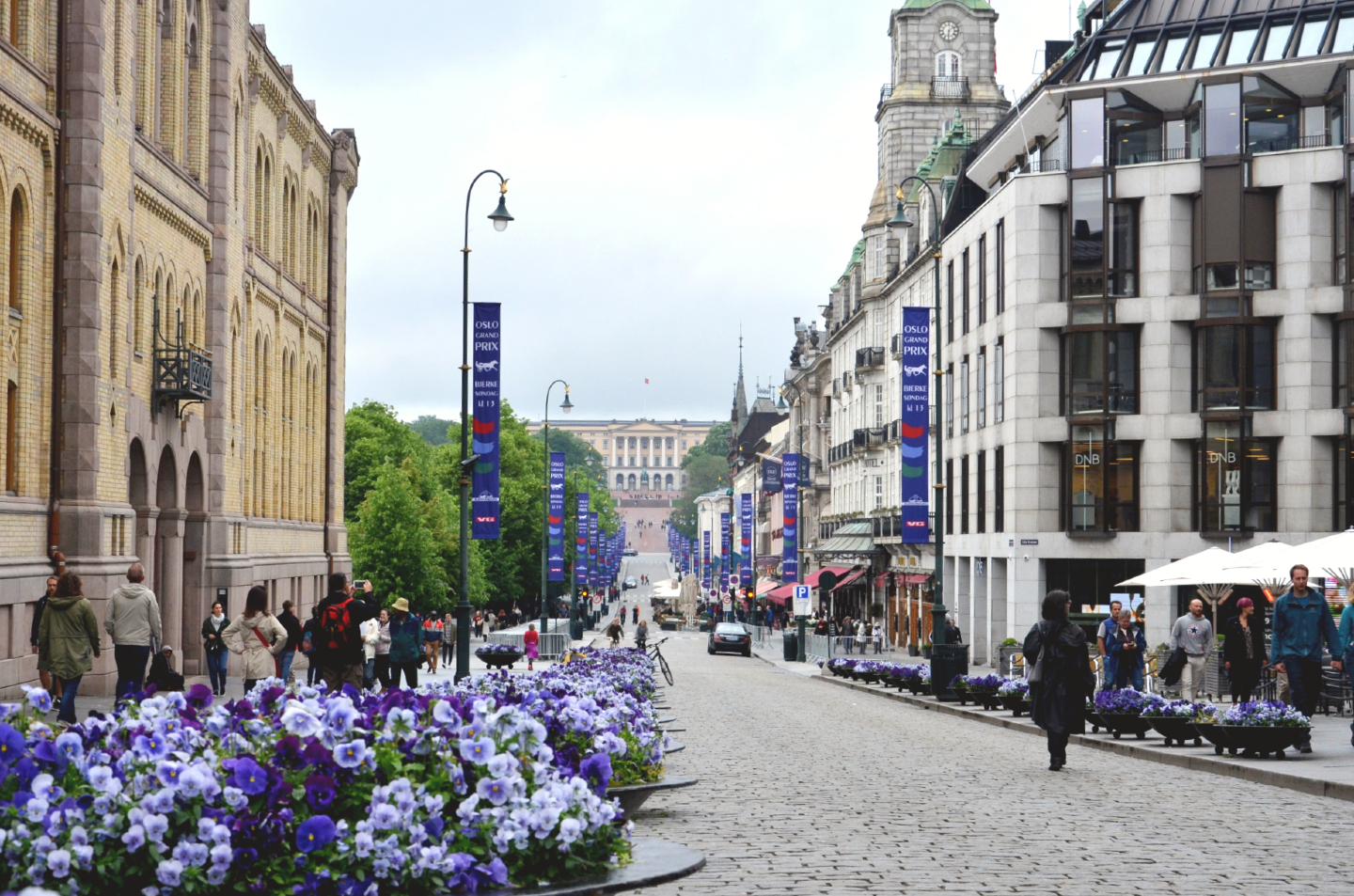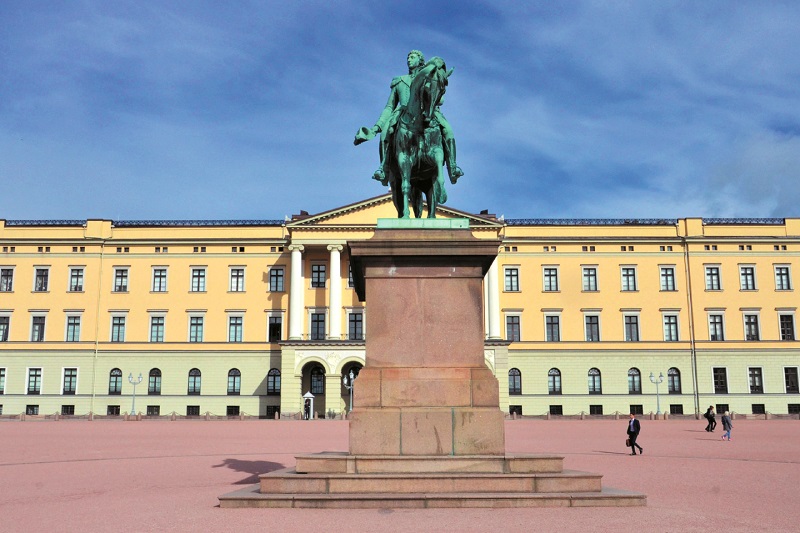
Flowers fringe the main street of Oslo (All photos: Lee Yu Kit)
Norway has a reputation for being one of the most expensive countries to live in, and with good reason. To the unprepared visitor, it could come as a shock — a Big Mac would set you back the equivalent of RM50, a BLT sandwich at a sit-down restaurant is RM100, a takeaway pizza is RM60 while a bottle of Coke is RM10.
One of the most northerly countries in the world, it has a long, rugged coastline and a tradition of fishing and agriculture, with some light industries. For most of the 20th century, it was not an expensive place to live in and was one of the least economically developed European countries.
All that changed in 1969 when vast oil and natural gas reserves were discovered off its coast, leading to the country becoming one of the wealthiest in the world within a few decades. It has wisely avoided the “resource curse” or “Dutch disease” that often befalls countries newly enriched by mineral wealth. Much of its riches from oil have been squirreled away in a sovereign wealth fund for the future. The Government Pension Fund Global is the world’s largest, with an estimated value in 2017 of US$1 trillion — more than 2½ times the size of the country’s economy.
fountain.jpg

Oslo has a quaint, provincial feel rather than the cosmopolitan bustle and dynamic energy expected of a wealthy nation’s capital city. That is no surprise given that for much of its history, Norway was ruled by Sweden, and then Denmark. Oslo, unlike Stockholm and Copenhagen, was never the centre of power.
The city is located at the end of a jagged blade of sea that is the Oslo fjord. Its harbour is a broad swathe of waterfront from which the main street leads in a straight line to the city centre.
At the harbour is the Opera House, which was built to look like a semi-submerged glacier. Covered with white Italian marble that gives it a snow-blinding effect in bright sunlight, the building has low, sloping surfaces that people can walk on, all the way to its roof.
Under construction close to the Opera House is an art museum that is dedicated to Norway’s best-known artist, Edvard Munch, whose works are currently displayed in a museum on the outskirts of the city. His most famous painting, The Scream, has made international news more than once for its disquieting imagery.
inside.jpg

A short amble up from the harbour would bring you to City Hall, with its distinctive twin towers made of red brick. Its design is reminiscent of Art Deco, which was popular in the first half of the 20th century, between the two World Wars. Completed in the 1950s, the building is notable for being the venue for the award of the annual Nobel Peace Prize, with other Nobel prizes being given out in Stockholm. Within the edifice is a vast hall, with murals, where the prize-giving ceremonies are held.
City Hall is a block away from the intimate city centre, with its lush central park lined with trees. In the park are the National Theatre, a collection of statuary, a fountain and a pool that brings light and movement to this welcome refuge.
On two sides of the park are the shopping and entertainment centre of the city. Here you can find homegrown brands such as Dale knitwear and Helly Hansen outerwear, with dining options ranging from Hard Rock Cafe to Asian eateries. During clement weather, restaurants set up tables on the walkways. On one side of the park is the classical architecture of the campus of the University of Oslo.
palace1.jpg

At the far end of the central park is an incline that leads to the Royal Palace, where the royal family resides. Set in a lush park that is open to the public all year round, the palace was constructed in 1850 to emulate the grand palaces of old European capitals, but on a far more modest scale, for Norway’s royal family is neither old nor wealthy, with the king having been elected rather than inheriting the title in 1905 when the country became independent of Sweden.
While Norway is rich in oil and natural gas, it encourages the use of sustainable energy, thus electric cars can be seen plying the roads. Fuel is expensive but electricity is not, with virtually all electricity produced by hydroelectric power, thanks to the country’s rugged terrain and water resources.
The relaxed nature of Oslo belies the country’s harsh environment, which Norwegians have adapted to, earning them a reputation for stoic toughness — forged from surviving and exploring in polar conditions. Fridtjof Nansen is considered by some to be the father of polar expeditions for his incredible journeys on ice — a heritage passed on to successive generations of Norwegian polar explorers such as Roald Amundsen, the first man to reach the South Pole.
ski.jpg

It also says something when the national sport involves leaping over the edge of a giant slope to launch oneself into space in the hope of landing gracefully on packed snow. Norwegians excel in ski jumping — that seemingly suicidal pursuit of gathering speed in icy conditions down a specially constructed slope and leaping into the void.
The most famous, and glamorous, ski jump in the world is Holmenkollen. An enormous facility built on a hill, it is a short uphill drive from the city centre. Ski jumping has taken place at this site for over a hundred years and the current version of the ski jump is an outsized, vertigo-inducing structure that looks purposeful and menacing, with its graceful and disturbingly smooth, knife-edge slope petering out into nothingness. From the hill, there is also a panoramic view of the city, pine-covered forests and shimmering sea far below.
There is a perverse logic to life-threatening pursuits that, rather than defying life, they are a celebration of life, lifting one above the plane of the mundane.
This is the perspective captured in the sculptures of Gustav Vigeland in his life’s work. A few kilometres outside the city centre, the Vigeland Installation in Frogner Park is remarkable for the fact that it is all the work of a single individual, and that it shows humans in all their frailties rather than the heroic and archetypal depictions common during the early half of the 20th century.
park.jpg

Rendered in stone and bronze, this was Vigeland’s magnum opus, an outdoor display of his works. There are thick-waisted women, children at play, frail old men and people caught in the emotion of the moment, such as a petulant child in the popular Angry Boy. There are also grand statements, such as the granite Monolith with intertwined human figures forming a tower. Even the wrought iron is the work of the sculptor, who invited controversy by seeming to embrace Nazi values.
Considering the vast wealth of the country, Norway’s capital city is modest and understated, without soaring statements in concrete, steel and glass. Oslo remains accessible, friendly and environmentally responsible as well as a place built for people. It serves as a reminder that cities are not grand statements of national ambition or pride, or about iconic buildings and towering monuments. Instead, the measure of the success of a city is that it is a place where people can live and excel in, so that the human spirit can soar.
This article first appeared on Oct 14, 2019 in The Edge Malaysia.


